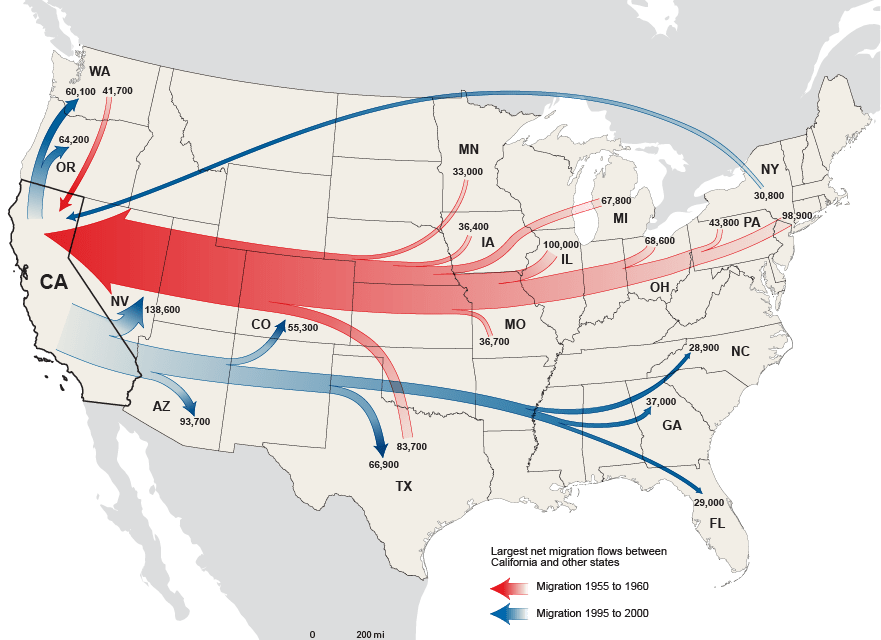*Image courtesy of the U.S. Census Bureau
A few weeks ago, we charted California’s domestic and international migration patterns. Here’s a visualization of recent out-migrations, courtesy of the U.S. Census Bureau.
The Census map shows that from 1995-2000 the states gaining the most former Californians were Arizona, Nevada and Texas. The only state to send more new residents to California during this period was New York.
In 2012, 5,791,000 individuals relocated in California. Nearly 500,000 of those were from other states and just over 250,000 were from foreign countries. Thus, nearly one in eight home sales and rentals involved an individual new to California.
The states sending the most new residents to California in 2012 were Texas, Arizona and Nevada. At the same time, California lost more residents to each of these states than it gained.
The takeaway: net international migration beats out net domestic migration in California. Our state has the largest new foreign migrant population each year, with 14% of all foreign migrants in the U.S. entering California.
Licensees can use this knowledge to adapt to migration’s effects. For instance, if your region has a lot of migrants from Arizona, agents can form relationships with agents in Arizona to arrange transactions (check out a review of interstate brokerage rules here). Or, familiarize yourself with what types of properties and amenities migrants to your area are looking for.















I found a lot of helpful information here, therefore I appreciate the post. Keep writing posts with this level of knowledge.
An interesting corollary to what was written may be a comment on one particular aspect of California life that few have researched. When a large study was conducted to discover and categorize the number of fatalities from the various forms of catastrophe, including high wind, hurricanes, tornadoes, floods, heatwaves, fires, ice storms, earthquakes, blizzards, etc. that occurred in each state, it was found that of all states, California had the least number of deaths from “natural” calamities.
Therefore, one may conclude that California is the “safest” state to live in, if considering “natural” calamities alone. But, one would have to also discover the number of deaths through human hands (crime, riots, killed by police, suicides, etc.) before coming to a final conclusion as to whether California was indeed the safest state in which to live.
Over the long term California will GROW GROW GROW !!!!!!!
Equally important to understanding migration into California is the exit migration. This article falls short in exposing California’s loses and consequences in it’s exit migration.